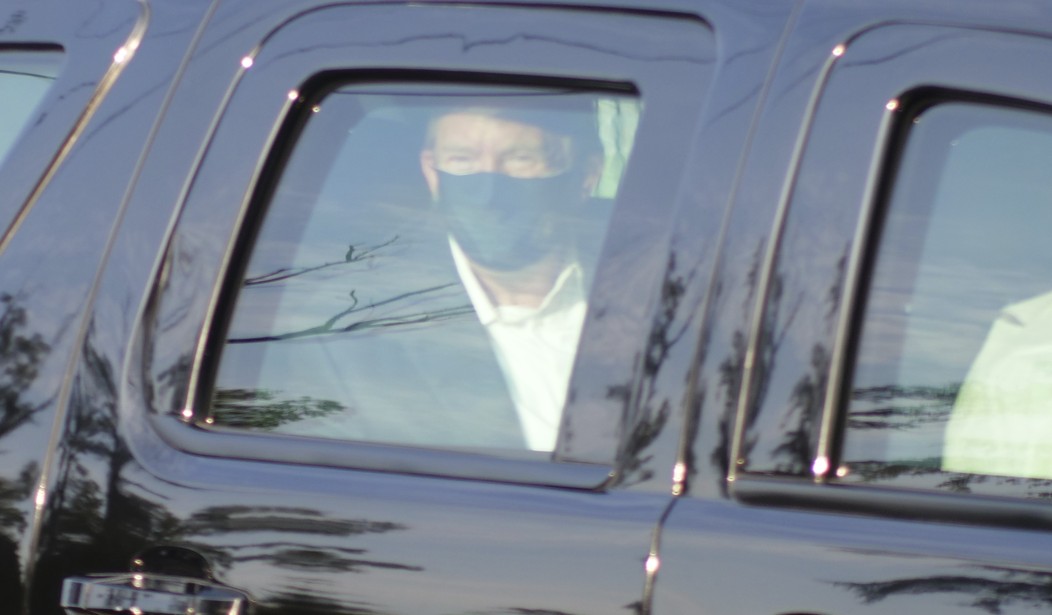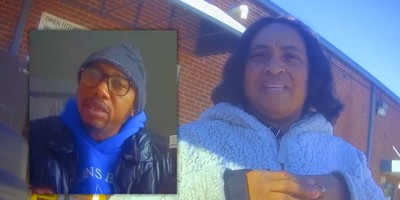One of the big lingering questions over the weekend regarding the president's COVID diagnosis was when, exactly, he first tested positive for the virus -- and when he last tested negative, an inquiry his team of doctors continues to avoid. Given the swirl of inaccurate information, evasions, and clarifications offered by doctors and White House officials, various scenarios seemed possible, and the truth matters for the purposes of contract tracing and approximating when the president could be fully recovered and cleared for public appearances. Based on one (quickly-retracted) official timeline, Trump had been diagnosed on Wednesday, which would have been genuinely scandalous, in light of events he attended into the nighttime hours of Thursday. Now we have the Wall Street Journal reporting that Trump tested positive on Thursday evening, prompting critics to cite one alleged quote from the president as evidence of a cover-up:
Mr. Trump received a positive result on Thursday evening before making an appearance on Fox News in which he didn’t reveal those results. Instead, he confirmed earlier reports that one of his top aides had tested positive for coronavirus and mentioned the second test he had taken that night for which he was awaiting results. Under White House protocols, the more reliable test that screens a specimen from deeper in the nasal passage is administered only after a rapid test shows a positive reading. Based on people familiar with the matter, the president’s tests followed that protocol. As the virus spread among the people closest to him, Mr. Trump also asked one adviser not to disclose results of their own positive test. “Don’t tell anyone,” Mr. Trump said, according to a person familiar with the conversation…The White House has said the operations team deemed the trip [to New Jersey for Thursday’s fundraiser] safe. The president had tested negative on a rapid test that morning, according to a person familiar with the matter.
If this is how things truly went down (I'd like a lot more transparency, documentation and clarity on this point), there are justified concerns about certain decisions that were made, but the "don't tell anyone" line shouldn't be among them. Recall that Trump himself announced his positive status in the early hours of Friday morning, via a tweet. If a rapid test (which are not 100 percent reliable, as multiple attendees at the Supreme Court nomination announcement ceremony can attest) had come back positive, and Trump was awaiting the outcome of a more accurate follow-up test, it would have been advisable to keep the initial result private until it had been confirmed. Leaking a false positive, then trying to put that genie back in the bottle, would have touched off an insane and messy news cycle or two. This applies to both the president and top aides. The correct course of action was to make sure someone really had the virus before prematurely announcing anything. "Silence for those few hours was the prudent move," Allahpundit writes, and I agree.
Recommended
What is far less defensible is the president's decision to attend an indoor fundraiser in New Jersey on Thursday night -- apparently prior to testing positive himself, but after Hope Hicks (with whom he'd repeatedly and recently been in close contact) tested positive. That constituted a known exposure, and basic protocol should have resulted in Trump avoiding additional contacts until he was in the clear (preferably including several negative tests, over several days). Instead, he went to an indoor event with donors, featuring a buffet dinner, where mask-wearing was reportedly scant. He did so after having been exposed, and after aides reportedly noticed that the president seemed fatigued or unwell. This needlessly risked endangering more than 200 attendees at the fundraiser, a significant number of whom likely represent at least one vulnerable demographic category. I don't know how you defend this:
NEW: Despite the WH learning of Hope Hicks's positive diagnosis just before leaving for NJ, Pres Trump didn't get a rapid test until AFTER his return. It was positive, prompting the PCR test, a WH official tells @CBSNews.
— Sara Cook (@saraecook) October 3, 2020
He called into Hannity while awaiting the PCR results.
I guess you could argue that even though top White House officials knew Hicks was positive (they pulled at least one top aide off the New Jersey trip as a result), maybe Trump himself didn't know. Under that 'best-case' scenario, this was still a major and dangerous failure by those officials -- one of whom told CBS News that he or she assumed that POTUS was aware of the Hicks test. Regardless, even as many people may dismiss it as 'too little, too late,' it is well past time for the White House and Trump campaign to overhaul Coronavirus mitigation protocols. Yes, it might be a bit of an ego bruise to backtrack on this, but what more could it possibly take to learn lessons and make needed adjustments? For instance, what could possibly have been the harm of holding the Barrett announcement ceremony with fewer attendees, spaced out, or with a similarly-sized crowd on the South Lawn, with more distancing? With masks required? It seems more or less undeniable at this point that the ACB unveiling, featuring indoor and outdoor components, was a major spreading event -- one that possibly led to the president's infection.
Reasonable steps to prevent such an outbreak could and should have been taken for months. Now that they've finally been bitten badly by half-measures and negligent decisions (I was critical of their handling of the president's RNC convention speech), they need to clean up after themselves and play things by the book. For what it's worth, I agree with the president that we cannot be paralyzed by fear and succumb to harmful shutdowns, but there are good reasons to be apprehensive and vigilant about this virus -- not the least of which is the growing death toll of approximately 210,000 Americans. Being too cavalier or triumphalist remains a major substantive and political error, even as Trump has apparently turned the corner and returned home. Finally, I've seen quite a few people -- including AP, in the aforementioned post -- buzzing about a theory rooted in a September 28th Rose Garden press conference:
I'm dead serious about this. I can't think of another event in 2020 with this distancing.
— Grudgie the Whale (@grudging1) October 4, 2020
4 other people speak at this:
Admiral Girour
Gov Reeves
Pence
Atlas
All four avoid getting ANYWHERE near Trump and go to the well-distanced podium.
I defy anyone to find a similar event. https://t.co/AILk8QMhVj
The suggestion here is that Trump must have tested positive, or was suspected of being infected, in late September. Because, as this story goes, why else would they employ this never-before-seen, two-podium approach for the first time, just a few days before Trump admitted testing positive? But I could have sworn that I'd seen the two-podium look used on several occasions, long pre-dating this episode. And my memory was accurate on this one:
We need more transparency & clarity from the WH re: timeline, but this theory (which I've seen shared & amplified) isn't supported by evidence. They've used the two podium setup on multiple occasions. Photos are from 7/16, 7/24 and 5/11, respectively. https://t.co/lq0Trw55P6 pic.twitter.com/BARZSaef3l
— Guy Benson (@guypbenson) October 5, 2020
As I say, I still strongly believe that more transparency is called for, and I do not yet have full confidence that we have a clear and accurate timeline of relevant events. But the "two podiums" theory seems conspiratorial because it is.

























Join the conversation as a VIP Member